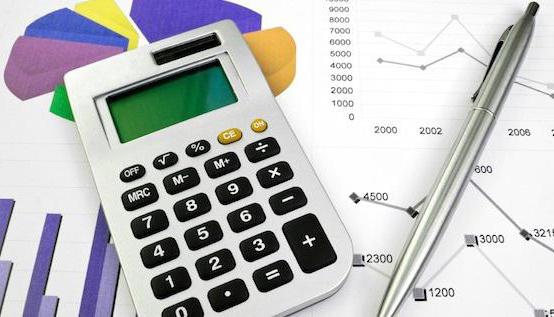Operating budget - a document containing a diagram of the income and expenses of the enterprise. It consists of several articles that characterize the groups of costs and revenues. Depending on the specifics of the work, the budget of organizations will vary. In the article, we consider what operational, financial budgets are, their composition and purpose.
The concept of budget, types of operating estimates in the enterprise
A budget is a plan that details the income and expenses of an enterprise. It is made up both for individual units, and for the entire organization as a whole. This is necessary in order to clearly focus on indicators of costs and financial results. In order to most fully reflect information and ease of use, they distinguish between types of plans. But regardless of the direction of activity, enterprises form a common budget. It consists of blocks of individual financial plans, coordinated into one whole.

The development of the overall picture of the costs and revenues of the enterprise begins with the formation of the operating budget. It directly depends on the direction of the enterprise and may include the following plans:
- sales - it is present in the general estimate of any company, it is the basis for other budgets, it shows quarterly and monthly sales in the enterprise as a whole and for each type of product in physical and cost terms;
- stocks of finished products, goods - contains data on stocks of goods and materials by divisions and the enterprise as a whole, often it is combined with the production budget;
- production (including for certain types of costs: labor, direct material, overhead);
- administrative expenses - contains information on administrative expenses;
- commercial expenses - combines the costs of the sale of products (advertising, transport services, commission fees, etc.);
- production costs - allows you to calculate the production cost of manufactured products.
The composition of the operating budget is the choice of an individual organization. When determining it, it is worth remembering that the estimates in its structure are a source of information for budgeting.
Sales Budget Feature
The first step in creating a general plan of income and expenses of the enterprise is to develop a cost estimate. This is an operating budget that contains information on estimated sales volumes, product costs, and revenues. To correctly form indicators, you need to constantly analyze and study the market, which is usually done by the marketing department.
In the process of drawing up the implementation budget, specialists decide what categories of products will be produced, as well as what their volumes and cost of sales are. The percentage of coverage in the current and subsequent months is also taken into account. The need for bad debt planning is being considered.

The operating budget for sales must meet the following requirements:
- quarterly or monthly sales volume is reflected in value and physical indicators;
- its formation is based on the categories of customers, seasonality and geography of sales, demand for products;
- includes the amount of expected cash flow from sales;
- the forecast of sales revenue contains collection coefficients that inform about the ratio of products paid in the current / next month and bad debt.
When preparing a sales budget, concepts such as revenue, profit, costs are used.The latter are divided into variables and constants. Variable costs vary in direct proportion to the dynamics of production. In other words, the more products manufactured, the more variable costs incurred. This may include the payment of materials and raw materials, labor and social contributions to employees, etc. Fixed costs do not depend on production volumes. These include, for example, depreciation, rental payments, management expenses.
Sales Budgeting
The estimate is formed in value and physical terms by quarters or months. The actual values are calculated taking into account the sales season, and the cost values are calculated depending on the level of inflation or changes in exchange rates. The operational budget for implementation is made according to the following algorithm:
- Calculate planned sales in physical meters for each type of product and customer groups.
- Calculate and record planned balances in warehouses within their minimum permissible volume.
- Determine the purchase and sale prices, taking into account inflation, the size of the planned implementation, taking into account seasonality (the amount of increase / decrease and sales figures of the previous month).
- Calculate the planned volume of purchased goods using the formula: About = AboutP + Ohto - ABOUTnwhere aboutP - the planned sales volume, and Aboutto and aboutn - stocks at the end and beginning of the period, respectively.
- Determine the monthly sales for each type of product at set prices.
- Calculate the dynamics of sales and price dynamics for the budgeting period.
- Determine annual sales by month and product period.
Economists consider it expedient to draw up a plan of commercial expenses simultaneously with the formation of a cost estimate for sales. This is explained by the fact that they are composed of the same specialists using interrelated indicators.
Business expenses budget
The costs of product promotion are directly related to sales, therefore, after the implementation plan, they usually begin to formulate cost estimates for sales. These include the costs of:
- commissions due to intermediaries;
- payment for transport services;
- packaging and containers;
- advertising;
- storage;
- covering other expenses (representation, storage, sorting, etc.).
The operating budget in terms of commercial costs during the formation is directly correlated with the sales volume indicated in the implementation plan. Moreover, most expenses are planned as a percentage of the amount of sales.
Stock estimate
The budget of stocks of products characterizes the balances in the warehouse for each type of product, as well as by departments and the enterprise as a whole. It is formed in value and physical terms. The inventories of inventories are allocated separately or included in the production budget. Calculate it twice for the period: at the beginning and end. At the beginning of the specified period indicate the size of the estimated balances, which includes products:
- shipped with an unpaid payment term;
- unpaid by customers on time;
- held by customers in custody;
- actually or expected remaining in stock.

The operational budget of the enterprise for inventories at the end of the period includes balances in the warehouses of products in the amounts that are normatively established, and the goods shipped with an unpaid payment term. The allowable stock size is calculated by the formula: Зto = Nd × ind × Cunitswhere:
- Nd - the standard stock of products in days;
- ATd - the number of products manufactured in one day;
- Tsunits - the planned cost per unit of output.
Indicator Hd form the time spent on packaging, paperwork and picking a batch. The obtained value of inventories is a condition for rhythmic deliveries and uninterrupted shipments of products.
The operating budgets of the organization are formed at their discretion.An enterprise has the right to combine a stock plan with an estimate of production costs. But if there is a need to more accurately reflect inventories in the warehouse at the beginning and end of the period, then drawing up a separate plan of product stocks will positively affect their accounting.
Production costs
The production operating budget of an enterprise may consist of several items of income and expenses that fully characterize the manufacturing process. Usually it is formed by 4 components, the list of which in specific conditions can be expanded.
After making an estimate of sales and stocks, they begin to formulate a plan for the production program in physical meters. Based on the data on the implementation budget and the quantity of inventories at the end of the period, the required production volumes are calculated. After which it becomes possible to draw up a complete production plan in cash meters for each type of product.

The data obtained become the basis for compiling other operating budgets. For example, having information on production volumes, you can develop a plan of direct material costs. Its content is divided into three main parts:
- need for basic materials;
- estimate MPZ at the beginning and end of the period;
- material procurement plan.
They are directly related to each other: on the basis of indicators of the need for materials make up a procurement plan, which includes the MPZ.
The budget of operating costs in terms of direct production costs is formed based on the following algorithm:
- Determination of the main types of materials and raw materials necessary for the manufacture of products.
- Calculation of consumption rates for materials and raw materials per unit of production.
- Making a forecast of changes in terms of direct material costs in connection with the revision of consumption rates, prices at inventories.
Other direct costs for raw materials are determined by multiplying the rate in rubles per unit of output and the estimated volume of sales in each month of the period.
Estimated direct labor costs
One of the largest parts of the costs in the manufacturing process is the remuneration of employees of the main workshops. You can determine its size by the previously formed plan of the production program, which determines the total amount of working time. The amount of costs depends on the payment system established by the organization, and the complexity of the manufacturing process. The last indicator is determined for each type of product in man-hours or hours. The wages of workers in the main production are calculated in monetary units, multiplying each labor hour by the established tariff value.

The budget of the operating activities of the enterprise in terms of direct labor costs is made according to the following algorithm:
- Define categories of variable costs, the value of which will vary during the budget period in proportion to the volume of sales.
- Calculate the standard values of the complexity for each type of product and the cost of 1 man-hour. Based on the values obtained, determine the total value of direct labor costs.
- Indicate in the plan the possible indexation of wages.
- Make an estimate of direct labor costs for the required budget period and a schedule for the payment of remuneration for labor.
Overhead budget
Overhead costs are classified as overhead. They arise non-uniformly, which leads to a difference in the calculations. Most of the overhead costs are directed to the maintenance and maintenance of equipment and other means of labor. In addition, this includes the costs of:
- depreciation of property used in the manufacture of products;
- OS insurance;
- utility bills for the maintenance of industrial premises;
- payment of rental property;
- remuneration for employees of auxiliary and maintenance workshops;
- other management expenses.

The development of the operating budget in terms of overhead costs begins with the classification of costs for variables and fixed. Then form an estimate, based on the following algorithm of actions:
- Determine the costs of operation and maintenance of the means of labor.
- Allocate general shop expenses.
- Make estimates for items of important overhead costs.
- To distinguish among them fixed and variable (conditionally constant) costs.
- Determine the size of the planned cost of labor.
For control purposes, some enterprises draw up a schedule for overhead costs for each month to be performed.
Management cost estimate
Overhead operating expenses of the budget are divided into two additional plans. Budgeting of commercial costs was discussed above, because for convenience, many experts recommend forming it immediately after determining the sales volume.
Management expenses include administrative staff costs and some small business needs. They are referred to fixed costs affecting the profit margin. Therefore, planning their size is accompanied by the establishment of limits, which are fixed amounts for the budget period.
Production costing
The compilation of the operating budget ends with the calculation of the cost of production, which is formed by direct and overhead costs. Available budget plans allow us to consider the ratio of production costs to the volume of finished products. By conducting a qualitative analysis of indicators, the enterprise will be able to effectively monitor and plan them.
In the course of economic management, organizations may need other supportive, operational, and financial budgets. They play the initial role in the preparation and processing of the necessary information to draw up a basic plan of income and expenses.

The operating budget allows the company, depending on its organization, to plan current economic activities. When forming a plan, first of all, they make an estimate of the volume of sales, on the basis of which further budgeting takes place. Gradually taking into account all the components of costs, the economist proceeds to create a document of income and expenses, the components of which are already defined. Then a balance sheet forecast for the future period is made.








